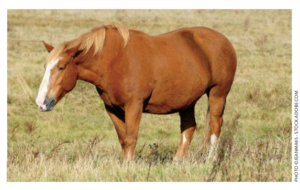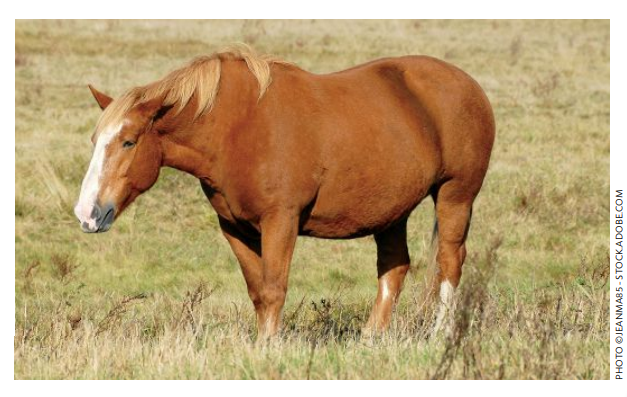Part 2: Integrating Microcurrent Therapy into Your Horse’s Wellness Program
by Deborah Powell
 Microcurrent therapy is a versatile treatment tool that you can use to help almost any physical issue your horses might experience. Once you decide to use microcurrent, it is important to select an appropriate device before adding microcurrent therapy to your maintenance program.
Microcurrent therapy is a versatile treatment tool that you can use to help almost any physical issue your horses might experience. Once you decide to use microcurrent, it is important to select an appropriate device before adding microcurrent therapy to your maintenance program.
Identify Your Need
Prior to researching microcurrent devices on the market, it is important to identify your primary need. For example, you might be looking to improve your horse’s performance, provide general maintenance, or to manage a known condition. Another possibility is that your horse has been injured and you want to speed up its recovery.
Your need (and your budget) drives the selection of an appropriate device. While any amount of microcurrent therapy is beneficial, to maximize the effectiveness of your treatments it is important to match your needs with the type of unit selected. Having all the extra features is fun, but sometimes a simple, economical device might be your best option.
Research Devices
All microcurrent units use microamperes and provide the benefits of low-level electrical stimulation however, each device has varying features and specifications that make them suitable for different uses. Brand names do not always indicate that the devices use microcurrent, which can make purchasing a microcurrent device confusing. For reference, all of the following are common microcurrent devices: AlphaStim, Best-Vet, Electro-Acuscope, Leg Saver, MicroPlus, Matrix MCT Patch, and Precision MicroStim.
Types of devices include self-powered, disposable patches that are good for treating legs and providing support for legs during travel or before a competition. To treat a wider range of conditions, there are the small handheld units, larger clinical-style devices, and the advanced biofeedback devices, which are the latest development in microcurrent technology. In order to successfully integrate microcurrent therapy into your horse’s maintenance program it is crucial to have an appropriate device that is setup for animal use. For people managing a full barn of horses, it may be ideal to have more than one unit to meet various needs.
Making Your Selection
Selecting the wrong device is a common mistake, so it is important to research and compare units. Additionally, you should choose one that is geared toward equine or animal applications and also offers training and appropriate accessories. This will often lead to improved long-term success because ongoing support is available.
Your Wellness Program
There are a wide variety of treatment methods and protocols for specific conditions, which can be learned from training sessions and equine microcurrent manuals. The following are several options that are highly beneficial and can easily be integrated into your horse’s wellness program. All-Body Microcurrent: This is a hands-free option where you attach pad electrodes to specific wither and croup points, and on each coronet band. The current is drawn throughout the horse’s body, which is great for maintenance sessions or before and after a competition. Locating Problems: Using an advanced GSR device, you can pinpoint problematic areas during your treatment sessions. For example, using the comb electrode to treat your horse’s saddle area can improve the tissue and alert you to any saddle soreness your horse might be experiencing. Localized Treatment: If a specific area comes under regular strain, then localized treatments can be beneficial to provide pain relief and prevent injuries. For example, treating your horse’s hocks with microcurrent can reduce – and sometimes eliminate – the need for hock injections. Needle-Free Acupuncture: Using probe electrodes, you can stimulate acupuncture points and Chinese meridians. Treating along the bladder meridian is an excellent all-body treatment for your horse.
General Guidelines
Note: Always consult your veterinarian when treating injuries.
- Monthly: All-body session for maintenance and prevention.
- Before Competition: To improve performance.
- After Competition: To prevent soreness.
- Ongoing: If a problem is located, treat that area until soreness is relieved.
- Injuries: Treat at first sight of lameness for faster recovery.
- Chiropractic Support: Before or after each session to sustain adjustments.
Published October 2012 Issue

The Northwest Horse Source is an independently owned and operated print and online magazine for horse owners and enthusiasts of all breeds and disciplines in the Pacific Northwest. Our contemporary editorial columns are predominantly written by experts in the region, covering the care, training, keeping and enjoyment of horses, with an eye to the specific concerns in our region.






